Exploring How Autism Shapes Educational Experiences
Autism spectrum disorder (ASD) is a complex neurodevelopmental condition that profoundly influences how individuals learn, communicate, and interact socially. Recognizing the diverse ways autism can impact learning is essential for educators, parents, and support staff to create effective, inclusive educational environments. This article delves into the various factors—ranging from sensory sensitivities and communication challenges to learning styles and behavioral patterns—that shape the educational journey of autistic learners. Emphasizing tailored strategies and collaborative support, we aim to shed light on best practices for fostering academic success and social inclusion for students on the spectrum.
How Autism Influences Learning and Skills
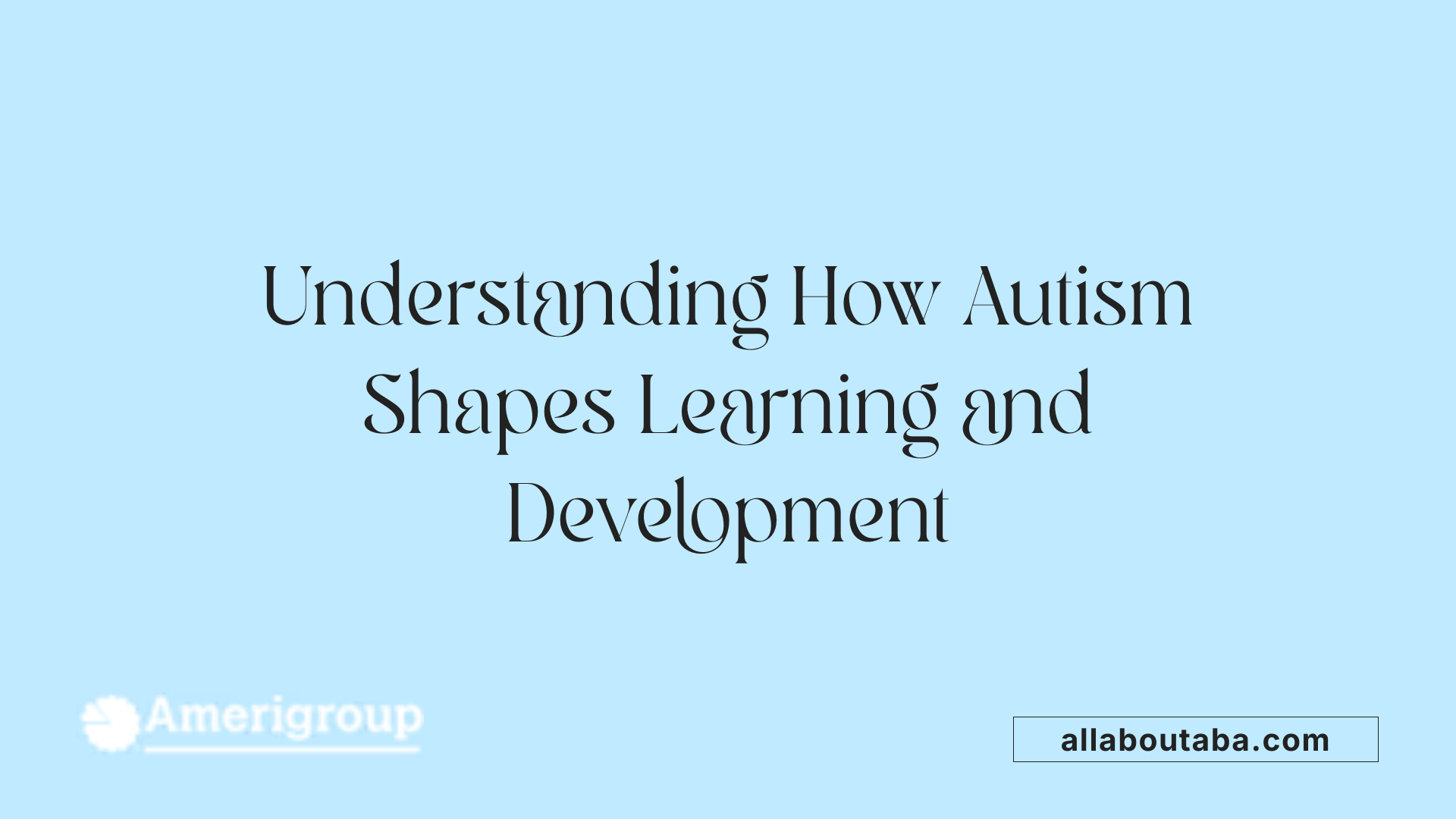
How does autism influence learning and skills?
Autism significantly impacts how individuals process information, communicate, and interact with their surroundings. Many autistic people face difficulties in language development, which can delay expressive and receptive communication. These language challenges make it harder for children to express needs, understand instructions, and participate fully in classroom discussions.
In addition to language issues, executive functioning skills such as planning, organizing, and switching between tasks are often impaired. These difficulties can affect a child's ability to complete assignments, follow routines, and adapt to changing educational settings.
Sensory sensitivities are common among autistic individuals. For instance, hypersensitivity to noise, lights, or smells can cause distractions or discomfort, while hyposensitivity may lead to missed stimuli and coordination issues. These sensory differences may result in distress, decreased focus, and reduced participation in learning activities.
Autism is not a learning disability, but it frequently co-occurs with learning disabilities. Around 60-70% of autistic individuals also have a learning disability, with reading disabilities being the most common. This overlap can further complicate learning in areas such as reading, writing, and math.
Many autistic learners benefit from tailored educational strategies that consider their sensory preferences, communication styles, and cognitive strengths. Visual aids, structured routines, sensory accommodations, and personalized instruction can greatly enhance their ability to learn and grow.
Overall, understanding how autism influences various learning processes is crucial for developing effective educational supports. By addressing language, sensory, and cognitive challenges, educators and caregivers can help autistic individuals realize their potential and succeed academically.
Key Characteristics of Autism Affecting Learning
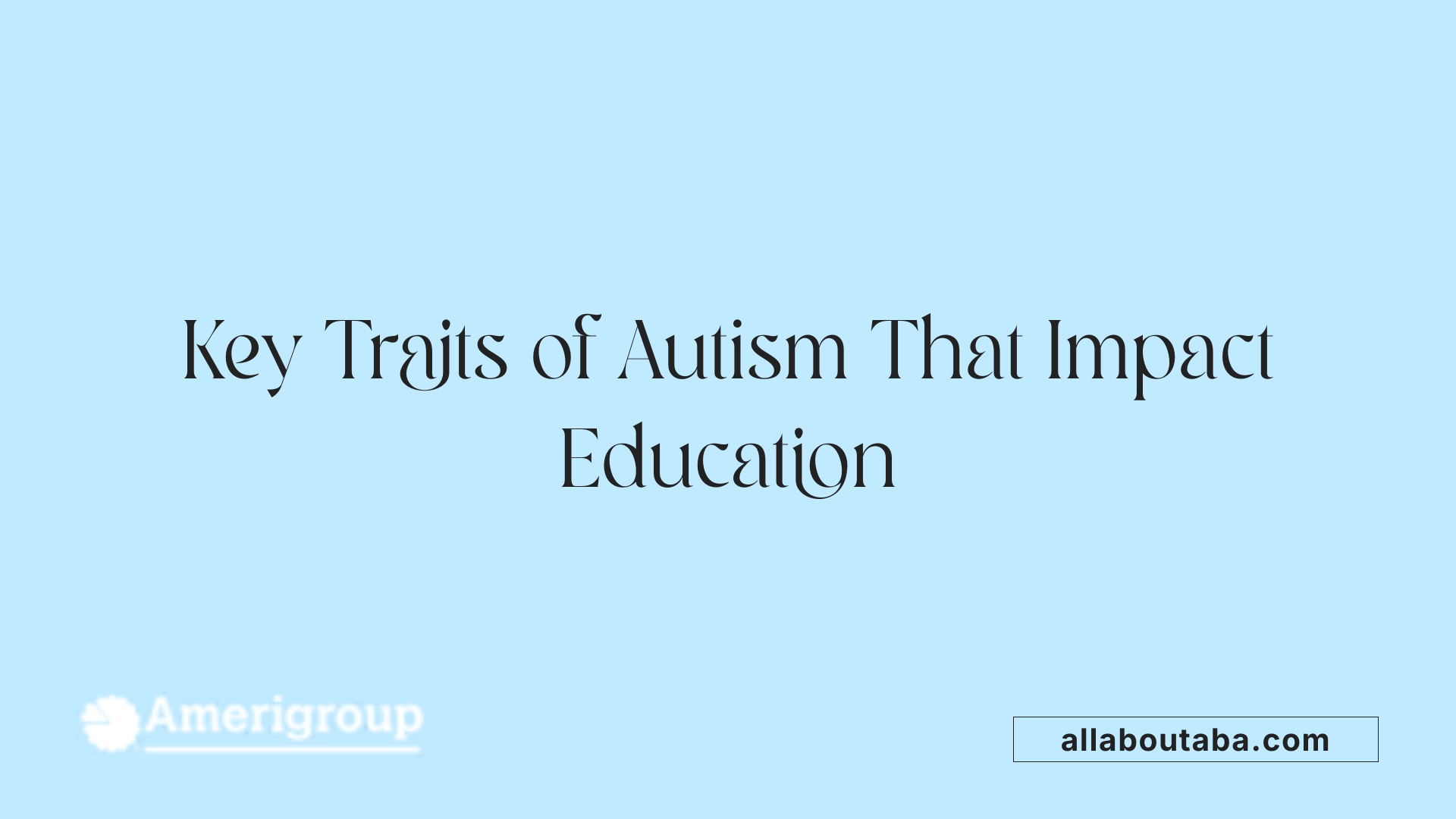
What are the key characteristics of autism that influence learning?
Autism spectrum disorder (ASD) manifests through various traits that can significantly impact how individuals learn. One prominent feature is challenges with social communication. Children with autism often find it difficult to understand nonverbal cues like facial expressions, gestures, and tone of voice. These difficulties can hinder their ability to engage in social interactions and collaborate effectively in classroom settings.
Repetitive behaviors and routines are also common. These may include insistence on sameness, repetitive movements like hand-flapping or rocking, and intense interests in specific topics. While these behaviors can be comforting, they sometimes interfere with the flexibility needed to adapt to new or changing learning environments.
Sensory sensitivities can greatly affect concentration and comfort. Many autistic learners are hypersensitive to stimuli such as loud noises, bright lights, or certain textures, leading to discomfort or distraction during lessons. Conversely, some may be hyposensitive, leading them to miss important cues or sensory input necessary for learning.
Difficulties with executive functioning—skills like planning, organizing, focusing, and impulse control—are common. These challenges can make completing tasks, following multi-step directions, or managing time particularly difficult, impacting overall academic performance.
Lastly, many individuals with autism utilize alternative communication methods. They might rely on non-verbal cues, picture exchange systems, or assistive technology. Recognizing and supporting these diverse communication styles is essential for fostering effective learning.
Understanding these traits allows educators and caregivers to tailor support strategies, creating more inclusive and effective educational experiences for autistic learners.
| Characteristic | Description | Impact on Learning |
|---|---|---|
| Social communication deficits | Difficulty understanding nonverbal cues, limited expressive language | Challenges in social interactions and classroom engagement |
| Repetitive behaviors | Insistence on routines, repetitive movements, focused interests | Can hinder flexibility and adaptation to new routines |
| Sensory sensitivities | Over- or under-sensitivity to stimuli | Distraction, discomfort, or sensory seeking behaviors |
| Executive functioning challenges | Difficulties with planning, organizing, impulse control | Poor task completion, difficulty managing classroom activities |
| Alternative communication methods | Use of gestures, visual aids, assistive tech | Necessitates tailored teaching approaches |
Effective support encompasses visual aids, structured routines, sensory accommodations, and personalized communication strategies. Collaboration among teachers, parents, and specialists is vital to create supportive learning environments that acknowledge these characteristics and leverage strengths.
Common Learning Barriers Faced by Autistic Individuals
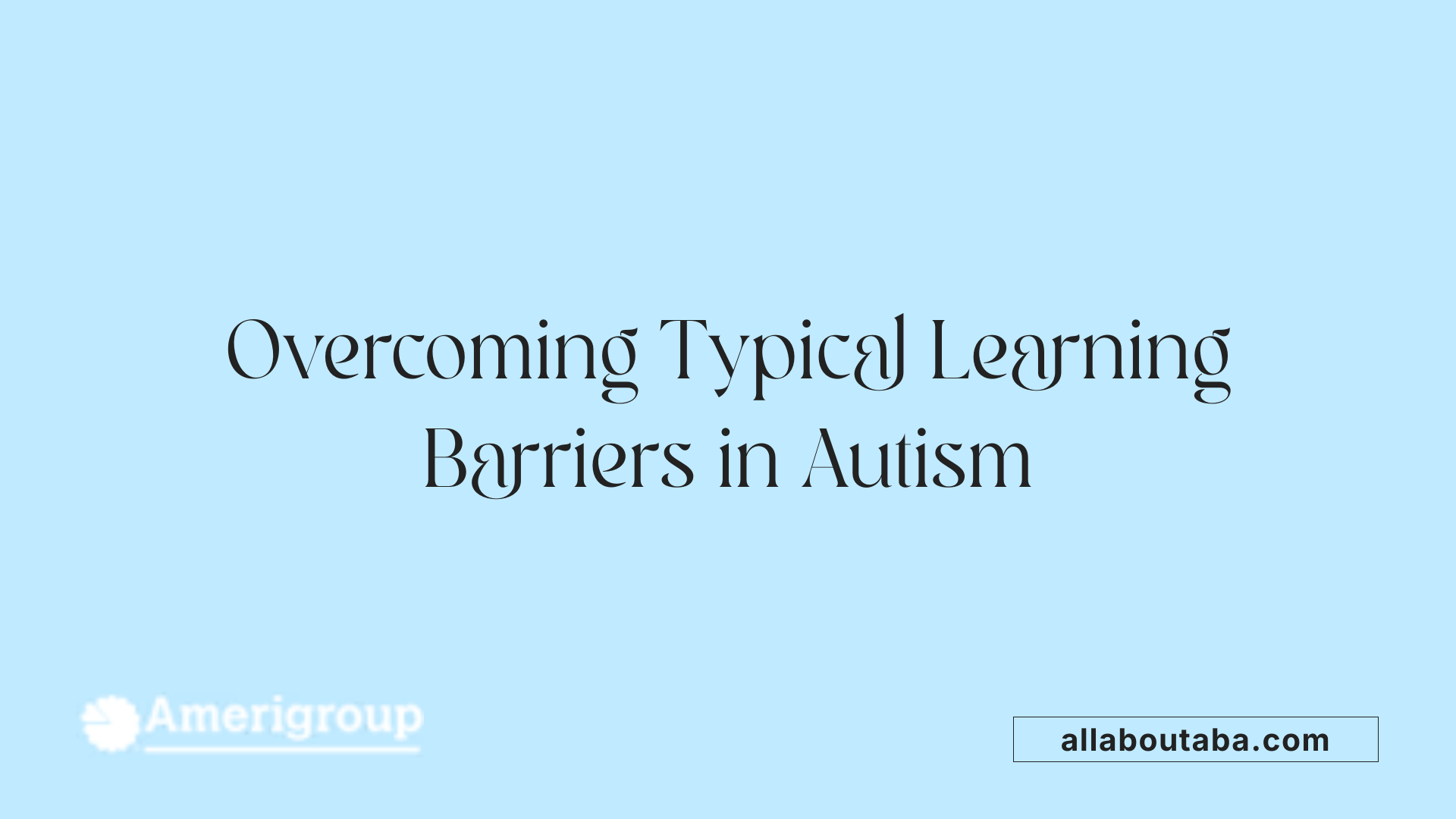
What are the learning barriers faced by autistic individuals?
Autism can influence learning in many ways. It often introduces challenges in social skills, including understanding social cues and engaging with others effectively. These difficulties can limit participation and interactive learning.
Processing information can also be a hurdle. Many autistic individuals experience delays or differences in how they interpret and retain information, especially when tasks are abstract or verbal instructions are complex.
Sensory sensitivities are common, such as hypersensitivity to lights, sounds, or smells. These sensory challenges can cause distractions or discomfort, making it harder to focus during learning activities.
Communication issues are prevalent, ranging from difficulties with expressive language to understanding nonverbal cues. Some children might rely on alternative communication methods like pictures or sign language.
Furthermore, increased anxiety and emotional regulation difficulties can impair concentration, motivation, and the ability to adapt to new or stressful situations.
Understanding these barriers helps in creating targeted educational strategies. Using visual supports, sensory-friendly environments, and structured routines can enhance learning outcomes for autistic students.
| Barrier Type | Description | Supporting Strategies |
|---|---|---|
| Social skills deficits | Difficulty in understanding or responding to social cues | Social skills training, peer modeling |
| Processing difficulties | Challenges interpreting, retaining, or acting on information | Visual aids, simplified instructions |
| Sensory challenges | Overwhelm caused by sensory stimuli like noise or bright lights | Sensory breaks, quiet spaces |
| Communication issues | Difficulties expressing needs or understanding spoken language | Alternative communication tools, speech therapy |
| Anxiety and emotional regulation | Increased anxiety impacting focus and behavior | Predictable routines, relaxation strategies |
Supporting individuals with autism involves awareness of these barriers and applying personalized interventions. Collaboration among educators, caregivers, and specialists ensures effective learning experiences tailored to each child's needs.
Autism’s Impact on Social Skills, Communication, and Anxiety in Learning
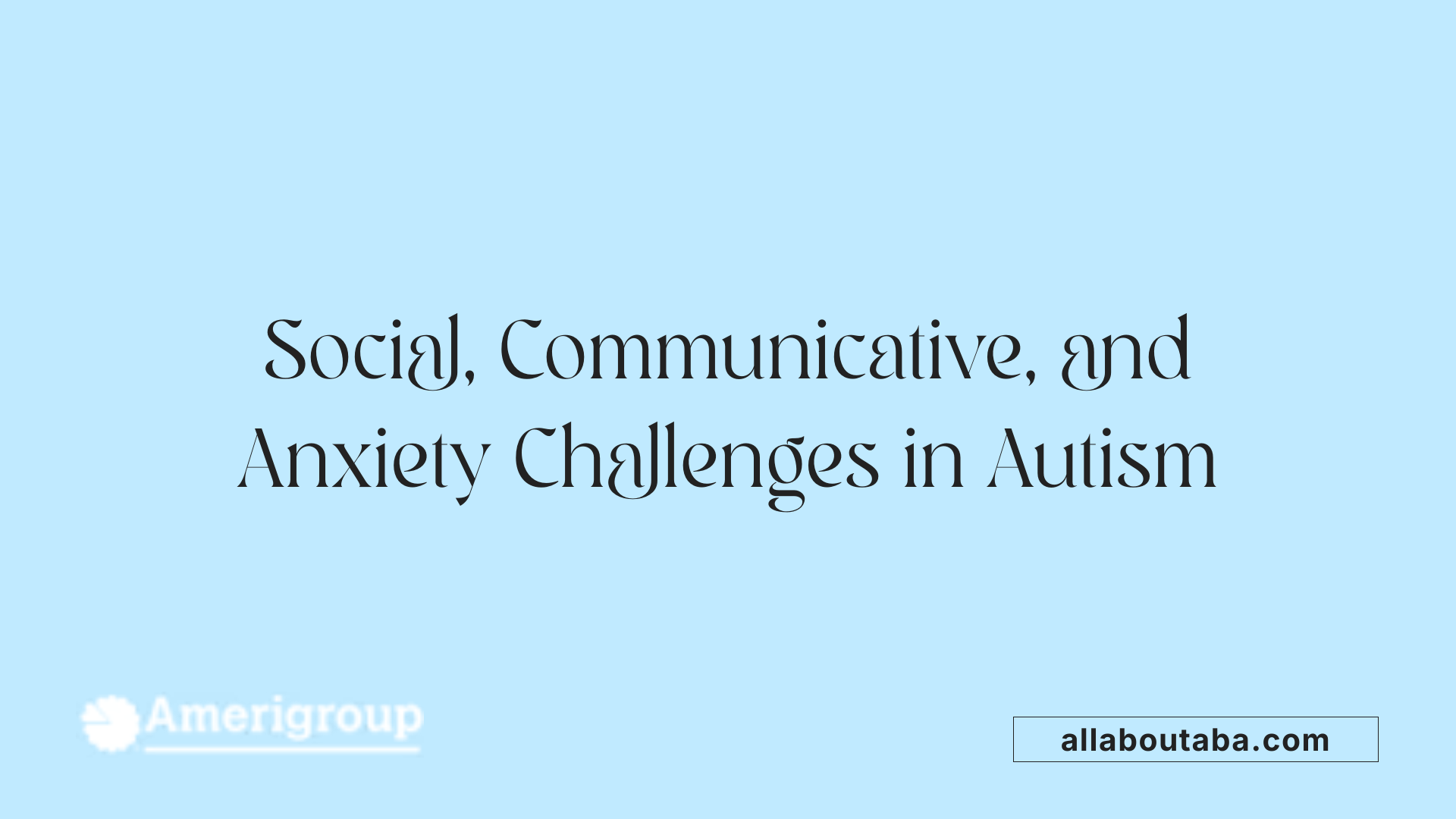
How does autism impact social skills, communication, and anxiety related to learning?
Children with autism often face significant challenges with social interaction. They may find it difficult to initiate conversations, interpret social cues like gestures and facial expressions, and respond appropriately in social settings. This can make forming peer relationships and participating in group activities harder, which are crucial components of the learning process.
Communication delays are also common among autistic children. They may experience delayed speech development or have challenges with receptive language (understanding) and expressive language (speaking). Some children might use non-verbal methods such as gestures, pictures, or sign language to communicate, while others may develop their own unique ways of expressing themselves. These differences require educators and parents to adapt communication techniques, utilizing visual supports and alternative methods to facilitate understanding.
Autistic individuals often experience heightened levels of anxiety, especially related to social interactions and unpredictable routines. Environments with loud noises, bright lights, or unfamiliar settings can increase stress and sensory overload. This anxiety can hinder concentration, reduce engagement, and even lead to behavioral responses that interfere with learning.
The combined impact of social difficulties, communication challenges, and anxiety can significantly affect a child's ability to participate fully in educational activities. They may withdraw from discussions, show less motivation to engage with peers, or struggle with tasks requiring social understanding.
However, targeted strategies can help mitigate these challenges. Social skills training can build confidence and understanding, while creating a predictable classroom environment can reduce anxiety. Emphasizing acceptance and understanding that social differences are natural variations fosters a supportive space where autistic students can thrive.
In summary, autism influences social interactions and communication, often accompanying increased anxiety that affects a child's engagement in learning. With appropriate accommodations, supportive teaching approaches, and a focus on neurodiversity, students with autism can develop meaningful connections and participate actively in their educational journeys.
Effective Teaching Strategies and Supports for Autistic Learners
What teaching strategies and supports are effective for educating individuals with autism?
Supporting learners with autism requires a variety of tailored teaching approaches aimed at addressing their unique needs. Visual supports, such as visual schedules, cue cards, and social stories, help autistic students understand expectations and upcoming transitions, creating a predictable environment that reduces anxiety.
Structured routines and environments are crucial, as they provide consistency and comfort. Clear, simple instructions combined with visual aids help students with language delays and enhance their comprehension.
Sensory regulation tools are vital for managing sensory sensitivities. Items like noise-canceling headphones, sensory toys, and fidget tools can help students maintain focus and emotional stability.
Positive reinforcement methods, including praise and rewards, encourage desired behaviors and foster emotional regulation. Using positive language and directions promotes a safe learning atmosphere.
Inclusive education also emphasizes social support. Facilitating peer interactions through pairing or group activities promotes social skills and acceptance. Teachers often use strategies such as peer mentoring or social groups to support social development.
Finally, customizing learning experiences by taking into account individual interests, sensory preferences, and communication styles ensures each student’s needs are met. This comprehensive approach enhances academic engagement and overall wellbeing.
| Strategy | Description | Benefit |
|---|---|---|
| Visual supports | Schedules, cue cards, social stories | Enhance understanding, predictability |
| Structured routines | Consistent daily schedules | Reduce anxiety, improve focus |
| Sensory tools | Headphones, fidget toys | Manage sensitivities, promote calm |
| Positive reinforcement | Praise, rewards | Encourage desired behaviors |
| Social activities | Peer pairing, group work | Build social skills, inclusion |
By implementing these strategies, educators can create a supportive and effective learning environment for students with autism, promoting their growth and success.
Impact of Autism on Academic Performance and Educational Experiences
How does autism influence academic performance and educational experiences?
Autism spectrum disorder (ASD) can significantly affect a child's learning journey. Many autistic students encounter difficulties in processing, retaining, and applying new information, which can hinder their academic success. Sensory sensitivities, such as reactions to loud noises or bright lights, might also distract or overwhelm them during lessons.
Processing information differently is common; autistic children often excel in visual learning but may struggle with purely verbal or abstract concepts. They might find it hard to understand figurative language or complex instructions, impacting subjects like reading, science, and math.
Executive functioning challenges, including planning, organization, and sustaining attention, further complicate task completion and adherence to routines. These difficulties can lead to decreased confidence and motivation if not supported appropriately.
To address these challenges, tailored strategies such as visual supports, structured routines, and sensory breaks help create a more accessible learning environment. Assessments like developmental and IQ tests can identify strengths—like exceptional visual skills or rote memory—that educators can leverage.
Individualized education plans (IEPs) play a vital role, allowing educators and families to set tailored goals and accommodations. Incorporating multisensory teaching methods, combining visual, auditory, and kinesthetic approaches, supports diverse learning preferences.
Creating a predictable, supportive classroom environment with clear routines and visual cues benefits autistic learners by reducing anxiety and improving focus. Support from speech-language pathologists, therapists, and trained educators enhances communication skills and social interaction, enriching the overall educational experience.
| Aspect | Impact | Support Strategies |
|---|---|---|
| Information Retention | Difficulties with short-term and long-term memory | Visual aids, repetition, multisensory methods |
| Processing Styles | Preference for visual learning; difficulty with abstract concepts | Visual schedules, diagrams, pictorial instructions |
| Communication | Challenges with verbal language; use of non-verbal methods | Alternative communication tools, social skills training |
| Sensory Issues | Distractions and overwhelm from sensory stimuli | Sensory-friendly classroom modifications |
| Executive Function | Difficulties planning, organizing, and focusing | Structured routines, breaking tasks into steps |
| Behavior and Interests | Repetitive behaviors; intense interests | Incorporating interests into lessons; |
Engaging multiple learning styles and tailoring instruction based on individual needs can significantly boost the educational experiences for children with autism, helping them reach their full potential.
Learning Styles and Information Processing in Autism
How does autism affect learning styles and information processing?
Autistic individuals tend to have specific learning preferences that influence how they absorb and remember information. Many are visual learners, meaning they benefit significantly from visual aids such as pictures, diagrams, charts, and schedules. This preference helps them understand lessons better, especially since they may face challenges with spoken language or auditory information.
Autistic children often utilize rule-based thinking and have strong rote memory skills. They can memorize large amounts of information, such as times tables, phone numbers, or spelling patterns, and prefer structured routines. This reliance on routines and fixed interests supports their learning but can also pose challenges when flexible thinking or understanding abstract concepts is required.
Their processing of sensory input differs from neurotypical learners. Many are more comfortable with concrete, local information gathered through specific lookup-table (LUT) learning, rather than broad or abstract ideas. This bias towards LUT learning can make it harder for them to generalize skills across different environments or concepts.
Recognizing these strengths and processing styles is essential for educators. Tailoring teaching methods by incorporating visual supports, routines, and familiar structures can help reduce frustration and promote engagement. Using a multisensory approach—combining visual, tactile, and contextual clues—can also enhance learning experiences and support better retention.
In summary, understanding how autism influences learning preferences enables the development of personalized educational strategies that leverage strengths such as visual thinking and rote memory while addressing equal challenges in abstract reasoning and flexible understanding.
Creating Inclusive Classrooms and Supporting Autistic Learners
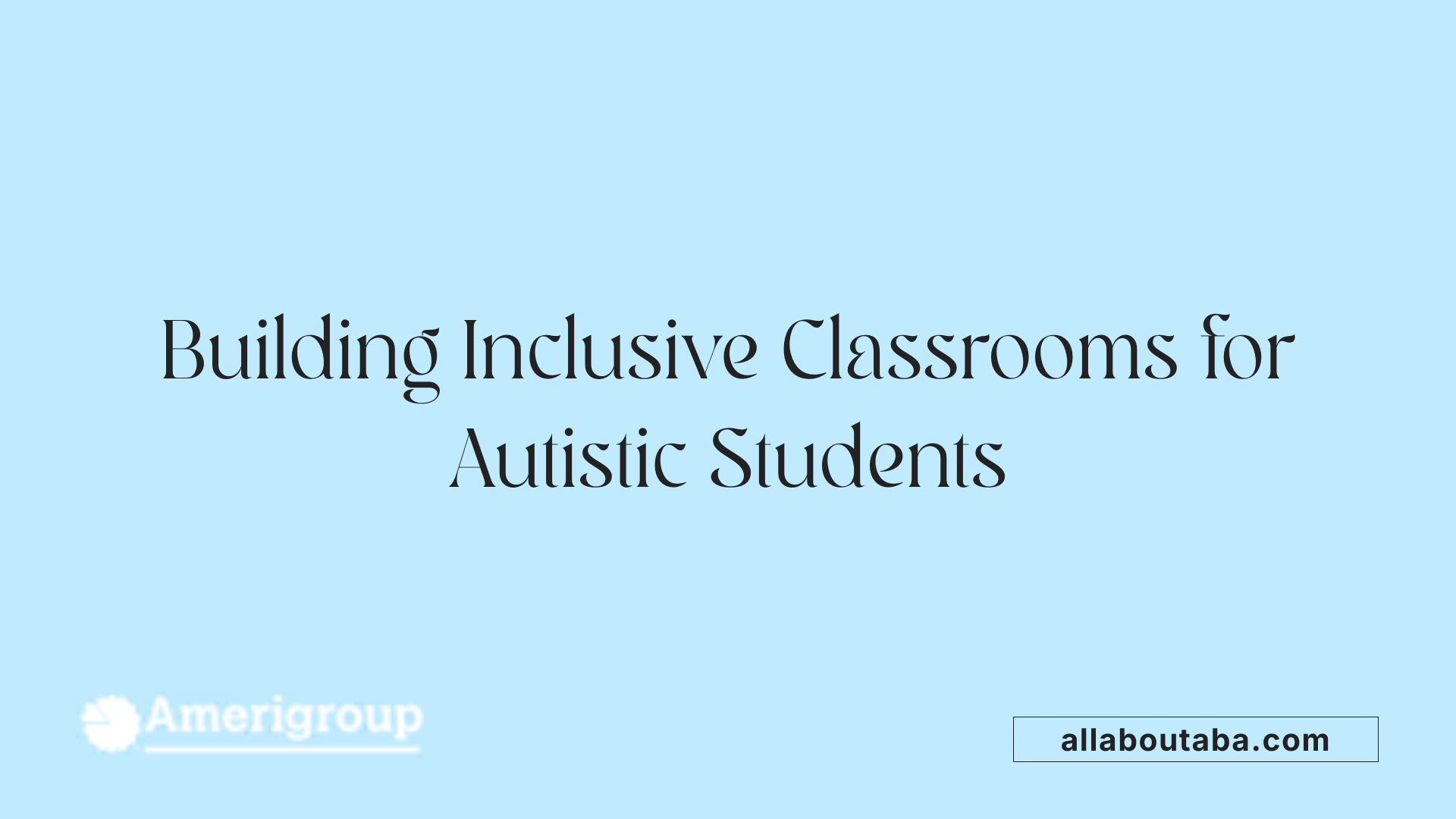
What are effective ways to create inclusive classrooms for autistic learners?
Designing classrooms that support autistic students involves multiple strategies tailored to their unique needs. A fundamental approach is establishing structured routines that provide predictability, helping students feel secure and capable of managing transitions. Visual supports, like visual schedules and charts, aid comprehension and assist with organization, especially for those who excel in visual processing.
Sensory accommodations are crucial, as sensory sensitivities—such as hypersensitivity to lights, sounds, or smells—can interfere with focus and comfort. Creating sensory-friendly spaces and offering sensory breaks help manage overstimulation. Flexibility within the environment, such as allowing alternative participation options or adjusting lighting and noise levels, further enhances comfort.
Teacher training and awareness are vital. Educators knowledgeable about autism can implement interventions effectively, use appropriate communication methods, and recognize individual strengths and challenges. Incorporating social narratives and peer support fosters social skills and promotes acceptance.
Supporting social inclusion is also important. Pairing students with peers in group activities and encouraging social interactions can improve social understanding and reduce feelings of isolation. Recognizing and leveraging students’ special interests can motivate engagement in learning.
Collaboration with families forms a cornerstone of successful inclusion. Regular communication ensures consistency between home and school, enables tailored strategies, and builds a supportive community.
Overall, creating a welcoming, responsive classroom environment that respects each learner’s needs encourages participation, improves behavior, and enhances learning outcomes for students with autism.
Supporting Autistic Learners: Collaboration and Tailored Approaches
How can teachers and parents provide better support for autistic learners?
Supporting children with autism effectively requires a personalized approach that considers their unique needs, strengths, and preferences. Teachers and parents can improve support by focusing on individual assessments and careful planning. This process helps identify each child's cognitive processing style, sensory sensitivities, language abilities, and areas needing development.
Using tools like visual schedules, social cue cards, and sensory aids can enhance learning and emotional regulation. Visual supports, such as charts, diagrams, and activity boards, are especially beneficial given that many autistic children are visual learners. These tools make abstract concepts more concrete and help children follow routines and instructions with less anxiety.
Collaboration is crucial. Teachers, parents, and support staff should share observations and insights about the child's interests and responses. This teamwork creates a more tailored educational plan that leverages strengths like visual thinking or rote memory, while addressing challenges like speech delays or sensory overload.
Creating a structured, predictable environment is vital. Consistent routines, clear expectations, and advance notice of schedule changes reduce anxiety and support successful learning. Simple accommodations like quiet areas, adjustable lighting, and noise reduction also improve focus and comfort.
Inclusive practices that promote social interactions among autistic and non-autistic students foster understanding and acceptance, enriching the classroom environment. When everyone is involved, social skills and empathy naturally develop.
Monitoring progress regularly allows educators and parents to refine strategies. Adjustments might include changing sensory tools, modifying tasks, or introducing new supports aligned with the child's evolving needs. This ongoing collaboration ensures that support remains effective, maximizing each child's learning potential.
By combining personalized interventions, environmental modifications, and teamwork, teachers and parents can create a supportive space where autistic learners thrive academically, socially, and emotionally.
Fostering Understanding, Support, and Success in Autism Education
Supporting autistic learners requires a nuanced understanding of the diverse ways autism can influence learning and a commitment to tailored, inclusive educational practices. By recognizing individual strengths, addressing sensory and communication challenges, and fostering collaborative efforts among educators, parents, and support staff, we can create environments where autistic students thrive academically and socially. Emphasizing flexibility, patience, and understanding, along with implementing evidenced-based strategies, will ensure that every autistic learner has the opportunity to reach their full potential in an accepting and nurturing setting.







